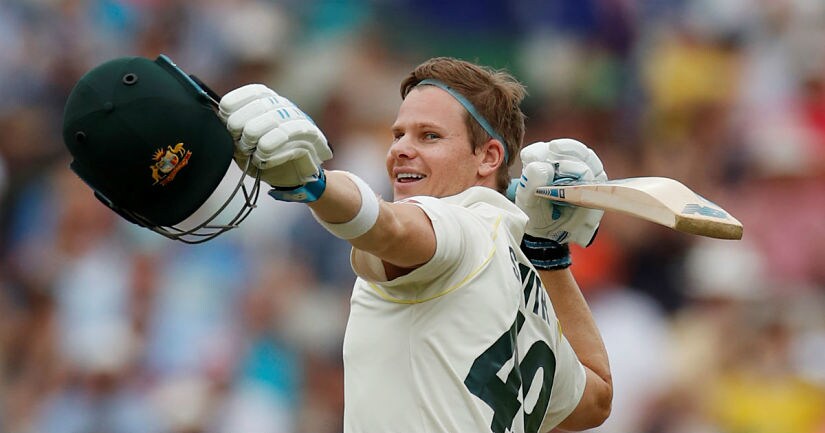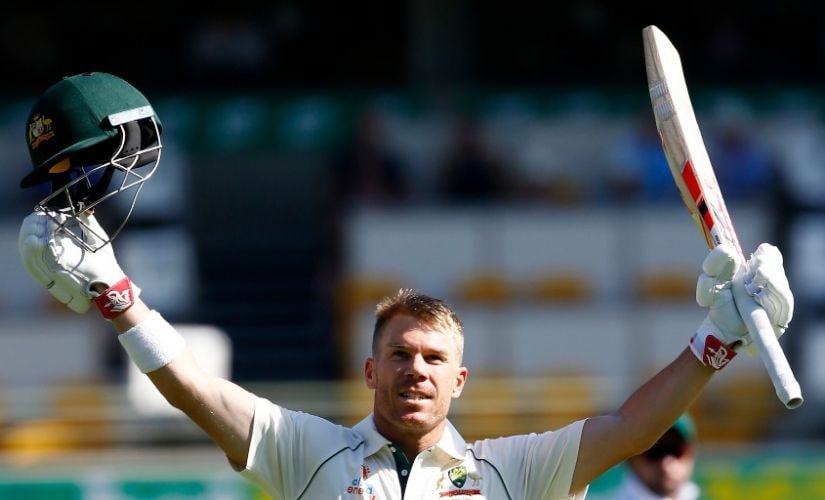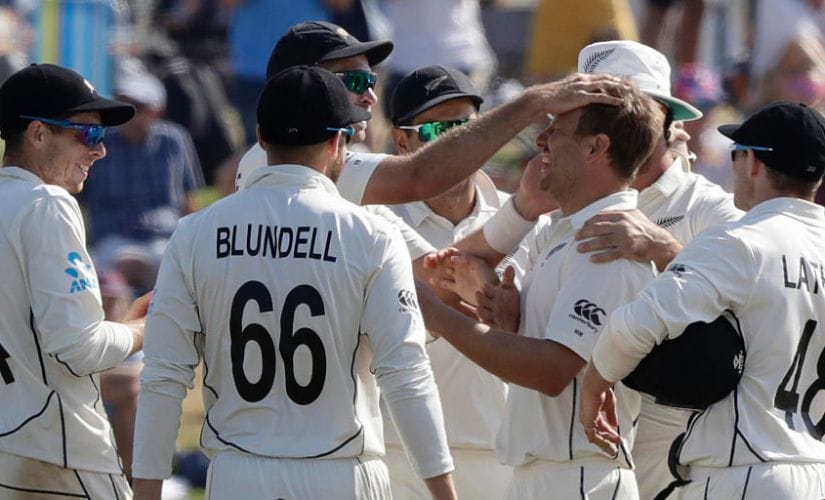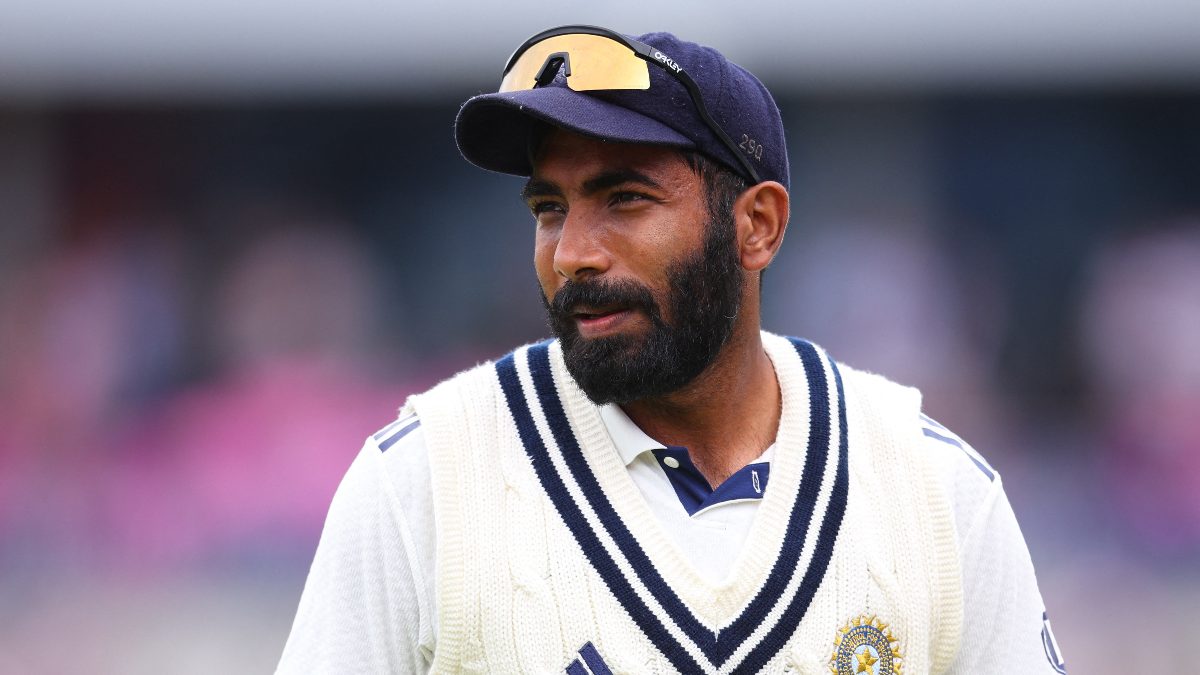Every Tuesday morning while I was growing up, the rubbish truck would drive past our house and collect our trash. For our pet dog, this was torture. In her eyes they were stealing something from us and she wanted to stop them. We had to keep her tied up on a Tuesday, because the rubbish men were her nemesis, and she wanted to get them. To the rubbish men, however, she was just another dog barking at them. [caption id=“attachment_7135731” align=“alignnone” width=“825”]  Steve Smith would look to continue his fine form in Test cricket with neighbours New Zealand visiting. Reuters[/caption] In some ways, this is similar to the cricketing relationship between New Zealand and Australia. To New Zealand fans, Australia are the nemesis, while Australian fans are only barely aware of New Zealand’s existence. The history of cricket between the two sides has been filled with outrage from New Zealand and indifference from Australia. The first match between these two was in 1946, fifteen years after New Zealand had obtained Test status. Even then the Australians didn’t initially accept that it was a Test match, and didn’t award caps to their players until two years after the match was played. The second match was in 1973, meaning that in the first 42 years of New Zealand cricket, their closest cricketing neighbour had visited only once (and that was by accident), and had never offered an invitation to reciprocate. The 1946 Australian side discovered a pitch that had hardly been mown, with long grass designed to counteract the pace of Ray Lindwall and Keith Miller. That backfired spectacularly, as medium pacer Ernie Toshack had a field day. He took 4/12 off 19 overs in the first innings, then 2/6 off 10 overs in the second innings before Bill O’Reilly cleaned up the tail causing New Zealand to lose by an innings and 103 runs with Australia scoring only 199 in their innings. Never since has a team won a Test by an innings despite not scoring 200. In 1973/4 the two teams played two series, one in each country. Australia won 2-0 in Australia, but New Zealand managed to draw the series in New Zealand, 1-1, securing a famous victory at Lancaster Park in Christchurch. The Hadlee brothers (Dayle and Richard) collected 12 wickets between them and Glenn Turner scored a century in both innings. That series exposed the New Zealand team to another aspect of playing in Australia - sledging. The exact nature of what was said and how much was said is disputed by various witnesses, but most felt that it was targeted abuse that was designed to try and unsettle the Kiwis, with Glenn Turner particularly singled out. This led to that team being dubbed the “Ugly Australians”. The Chappells and Hadlees were heavily involved in the early matches between New Zealand and Australia. Of the first 64 matches played between the sides, only 4 (1 Test and 3 ODIs) did not feature at least one member of either family. And members of those families were involved in a number of the matches and incidents that helped establish the nature of the relationship for New Zealanders. The most iconic match between the sides was an ODI match on 1 February, 1981 at the MCG. It was part of the first overseas series to be telecast in New Zealand, and there were two incidents that really caught the public’s attention. The first was during Australia’s innings. Greg Chappell was facing Lance Cairns. He was on 52 and starting to accelerate. Chappell came down the pitch and hit the ball into the outfield where Martin Snedden took a remarkable diving catch to dismiss the Australian captain. Or it would have dismissed him but for the umpires. The two home umpires were not watching to see if the catch was completed, and so they gave it not out. Chappell went on to score 90, and those extra 38 runs were crucial in allowing Australia to get a competitive total. So competitive was the total that it came down to the final ball. Trevor Chappell was bowling to Brian McKechnie. He had to hit 6 off his last ball to tie the match. McKechnie is not recorded as having hit a 6 in any professional cricket match prior, so getting his first at the MCG seemed an unlikely prospect, but one Greg Chappell was not prepared to risk. He asked his brother to bowl underarm. McKechnie threw his bat in disgust, Richie Benaud gave Greg Chappell a stern dressing down from the TV studio and even Robert Muldoon, the New Zealand Prime Minister weighed in, saying “I thought it was most appropriate that the Australian team was dressed in yellow.”
That incident galvanized the New Zealand public behind the team in a way that hadn’t been seen before. The match established two things in the minds of New Zealand fans: Australia is enemy number one, and Australians will do anything to win. These two perceptions were further strengthened by future incidents, such as the time when a Lance Cairns final wicket was no balled for intimidatory (medium paced) bowling, allowing Australia to save a match or when Greg Dyer scooped up a dropped catch and claimed it as good to dismiss Andrew Jones. The Australians, however, have tended towards indifference rather than outrage. One of the reasons New Zealand hasn’t played a Boxing Day Test since 1987 is a fear that the crowds will not be big enough due to Australians not rating the New Zealand team as viable opponents. That indifference has bordered on condescension at times. The New Zealand team is regularly written off as “battlers” and good performances are often attributed to clever captaincy rather than quality cricketers. In the lead up to this series, the same pattern has started to emerge. New Zealand’s bowlers have been called “trundlers”, and there have been numerous articles predicting Australia will have three comfortable wins. [caption id=“attachment_7769761” align=“alignnone” width=“825”]  David Warner found his missing touch in Test cricket with a ton against Pakistan. AP[/caption] And they very well might. This Australian team is starting to get their swagger back. Retaining the Ashes, then dispatching Pakistan have given them confidence, and when Australia play with confidence, they can be close to invincible. In Pat Cummins they have a champion bowler, and Steven Smith is making a strong claim to be the best since Don Bradman. David Warner has also found his home touch again. But this is not an average New Zealand side. They have won 8 of their last 10 series (like India), with one loss and one draw. In terms of series results, the other teams to come close are India (8 wins, 2 losses) and South Africa (6 wins, 4 losses). New Zealand has 3 seam/swing bowlers who are well established and capable of working over any batsmen, plus the enigmatic Colin de Grandhomme and exciting Lockie Ferguson. In Tom Latham, Kane Williamson, Ross Taylor and Henry Nicholls they have a quality top order and BJ Watling provides a man for a crisis. [caption id=“attachment_7769821” align=“alignnone” width=“825”]  New Zealand arrive in Australia on the back of a 1-0 win over England at home. AP[/caption] New Zealand may struggle with the heat in Australia; 40° days are pretty much unheard of in New Zealand. The bounce might create some problems; Latham and de Grandhomme in particular have techniques more suited to slower pitches. The Australian air might not assist New Zealand’s swing bowlers; traditionally Australia suits seam more than swing. Home advantage is massive in Test cricket. However, this New Zealand side has started to show an ability to overcome adverse conditions and find a way to be successful. The shadow of the recent Whakaari/White Island tragedy may cause some behaviour to be toned down, so there may be a lower chance of controversial moments, but this series will almost certainly have periods of outstanding cricket with two quality teams refusing to give an inch. And that is worth watching for, regardless of whether you are an outraged New Zealand fan, an indifferent Australian fan or a neutral onlooker.


)

)
)
)
)
)
)
)
)



